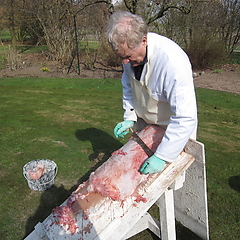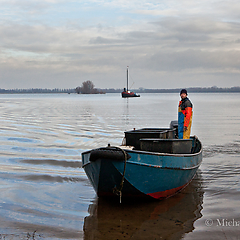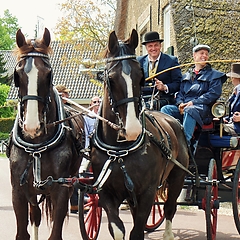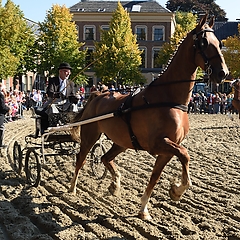In the Eastern Scheldt, at Bergen op Zoom, there are sandbanks which form attractive spawning places for fish like anchovy. These sandbanks are used for sticking in weirs, or fishing weirs.
A weir consists of two rows (vleuken) of between 800 metres and a kilometre long, made of branches that are stuck in, in a V-shape. The end forms a fish trap, which is placed right in the middle of the route that the seawater takes when it flows out again at low tide. The weir wood is usually oak, willow, beech and ash.
Because of the large tidal range, one can reach the weir opening at low tide wading. The fish, that swims to the shallow parts of the Eastern Scheldt at high tide, ends up within the woodwork of the weir. When at the end of the high tide the fish tries to reach the deeper waters, it finds the palisade in his way. Most fish species can easily swim between the branches, but the anchovy is scared off by the palisade. It swims farther and farther into the weir, until it reaches the opening. The heart-shaped space in front of the opening is called the weir room. A fish trap is placed at the opening, after which the fishermen enter the weir on foot, wearing wading suits. A driftnet is used to drive the fish from the rear side of the weir room to the trap opening.
In the period from end of April to mid-July, the fishermen turn out twice per 24 hours for the anchovy catch, which takes place one hour before low water. At the end of the season, the nets are removed to prevent damage. Autumn storms, shipworm and ice cause serious damage to the weir wood in winter. Afterwards the weir is taken down and lost posts are replaced. A part of the anchovy catch is salted and sold in pots as fillets.



